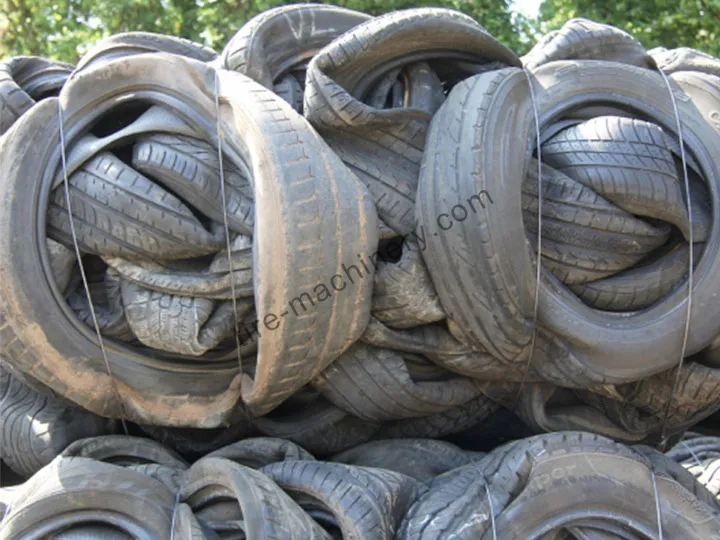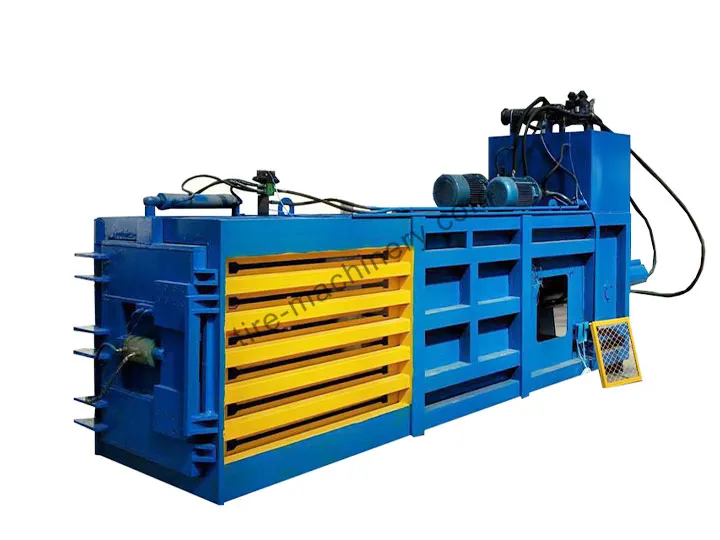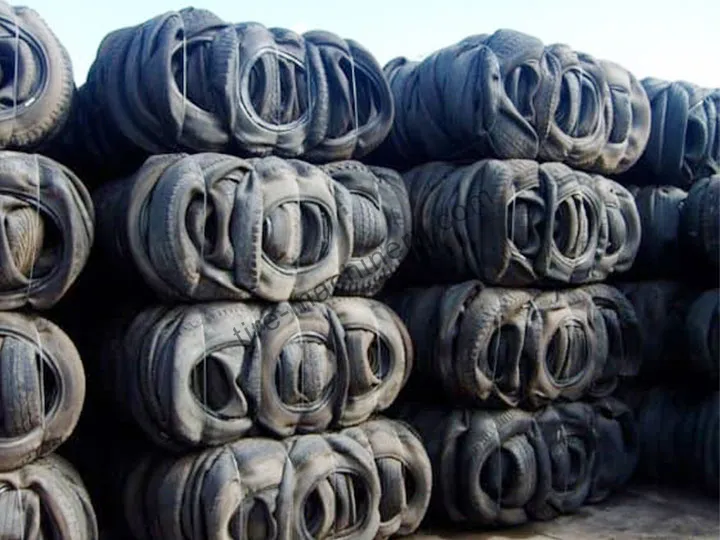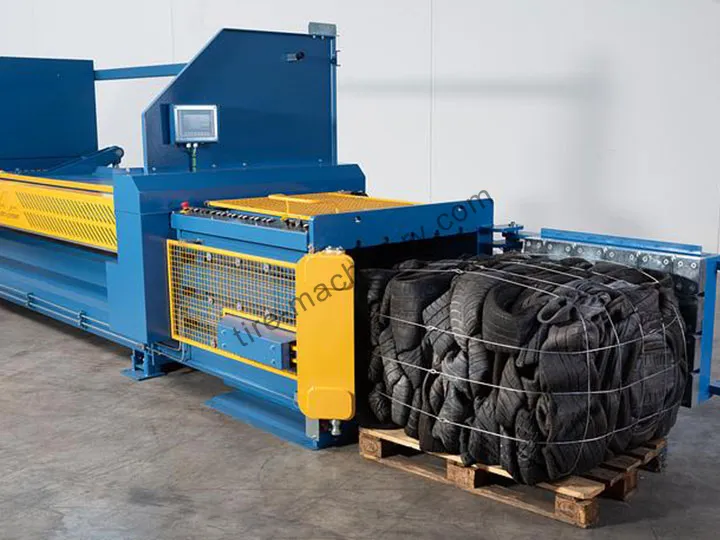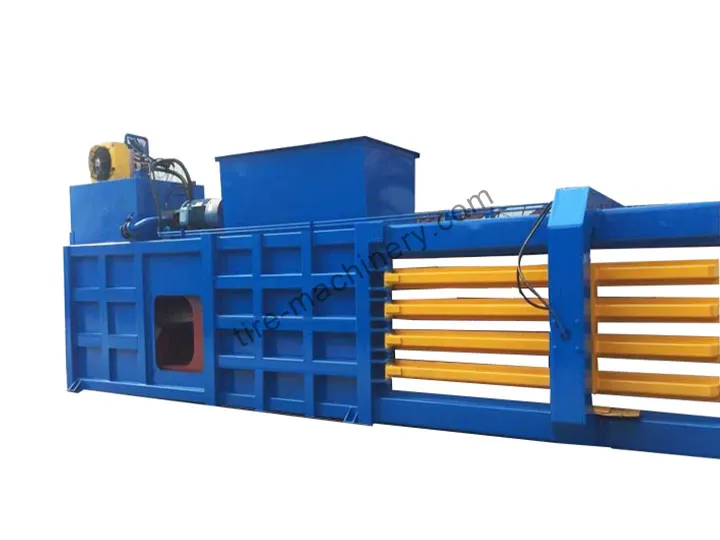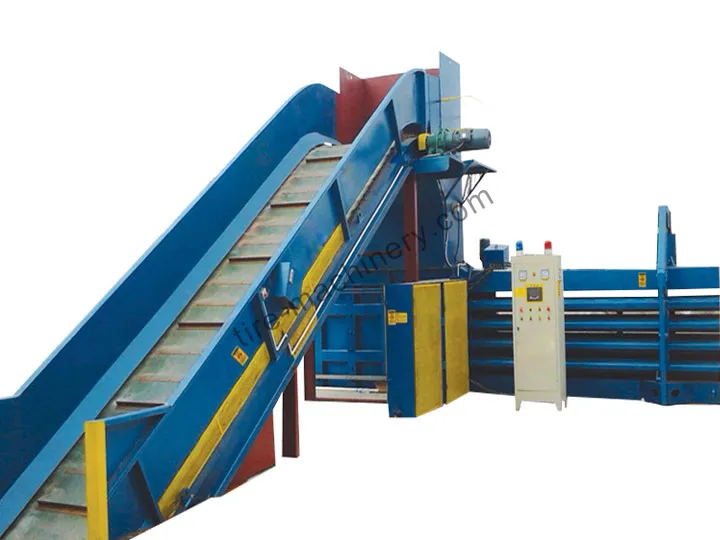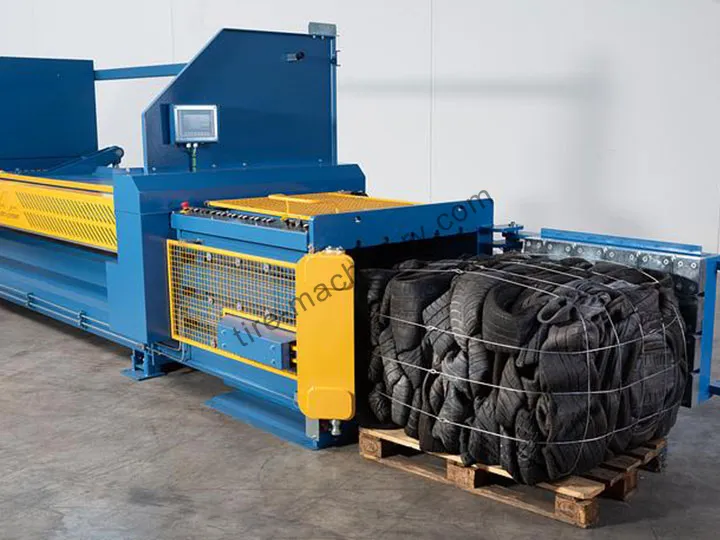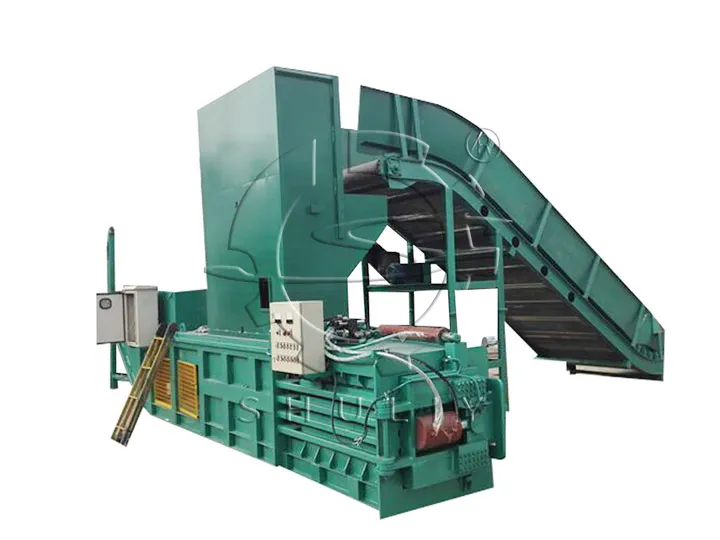
Tire Baler Machine
The Tire baler machine is a key solution for efficiently compressing waste tires into compact, manageable bales, making them easier to transport and store. These machines are vital in tire recycling, helping businesses streamline their operations while ensuring environmental compliance. Whether you’re running a large-scale commercial operation or a smaller facility, a tire baler machine offers reliable performance and ease of use.
Key Features of the Tire Baler Machine
High-Capacity Performance: A Tire Baler Machine is engineered for high-capacity tire compression, allowing businesses to process up to 100 whole passenger or light truck tires into a single compact bale. These bales are designed for easy handling, with an optimized weight that simplifies storage and transport. The machine operates efficiently, producing multiple bales per hour, ensuring continuous operation in high-demand environments.
Advanced Hydraulic System: Equipped with a powerful hydraulic tyre baler, the machine features robust hydraulic compression rams that provide the necessary pressure for tire compaction. The hydraulic system operates at preset pressures but can be adjusted to meet specific needs, such as handling larger tires or varying tire types. The tire baling press machine provides consistent and reliable performance, increasing overall throughput and minimizing downtime.
Versatile Waste Compaction: Beyond tire recycling, the tire waste compactor can also process other materials such as cardboard, plastics, and aluminum, making it a versatile option for recycling businesses that handle multiple waste streams. By consolidating multiple recycling tasks into one machine, businesses can reduce costs and improve overall efficiency.
Automatic and Manual Operation: The automatic tire baler offers both automated and manual operational modes, providing flexibility to users depending on the job’s requirements. The machine’s manual hydraulic control system ensures precision, while the automatic cycling process can complete a bale in under 30 seconds, significantly increasing productivity. Whether used for large-scale operations or smaller batch jobs, this flexibility makes it a valuable asset.
Durability and Cost-Effectiveness: Built for demanding applications, the rubber baler machine is made from durable materials that ensure longevity even under constant use. With low fuel consumption—typically around 1 gallon per hour of diesel—the machine offers excellent energy efficiency, making it a cost-effective solution. Additionally, the long-lasting design reduces maintenance needs, providing a solid return on investment for businesses.
Environmental Impact of Tire Baler Machines
The Tire Baler Machine plays a crucial role in environmental sustainability by reducing tire storage space and minimizing waste sent to landfills. By compressing tires into dense, easy-to-transport bales, these machines simplify recycling, contributing to a cleaner environment. Businesses can meet increasing regulatory demands by using this equipment to support tire-to-tire recycling and other green initiatives.
More Machine Images
Frequently Asked Questions
Most frequently asked questions by customers who purchased Shuliy tire baler machine.The processing capacity of the tire baler machine depends on the model. For example, the SL-120 model can compress 5-8 tons of waste tires per hour, the SL-160 model processes 7-10 tons, and the SL-200 model handles 10-15 tons. The exact capacity may vary depending on the tire size and type.
The bale size varies by model. Typical sizes include 1100×900×1200 mm (SL-120), 1100×1300×1500 mm (SL-160), and 1100×1300×1700 mm (SL-200). The bale weight typically ranges from 900 kg to 2000 kg, depending on the type and quantity of tires processed.
All models of the Tire Baler Machine feature a 31.5 MPa hydraulic operating pressure. The thrust varies by model: the SL-120 model offers 1200 kN, the SL-160 model provides 1600 kN, and the SL-200 model offers 2000 kN, ensuring powerful compression capability.
Yes, the hydraulic tyre baler is designed to handle a wide variety of tires, including passenger tires, light truck tires, commercial truck tires, and tractor tires. Certain models can also adjust to process different tire sizes.
Yes, the tire baling press machine is versatile and not only handles tire recycling but can also compress other materials such as cardboard, plastics, and aluminum. This multi-material processing capability increases the value of the machine, helping businesses reduce equipment costs by consolidating several recycling processes into one machine.
The power requirements for the Tire Baler Machine depend on the model. Typically, it requires 22+18.5 kW (SL-120, SL-160) and 37+22 kW (SL-200). Regarding energy consumption, the diesel engine model consumes about 1 gallon of diesel per hour, making it energy-efficient for continuous operations.
Yes, the tire waste compactor is designed for ease of operation. It is equipped with both manual hydraulic control and automatic operation systems, allowing users to switch between modes based on the task. The tire waste compactor requires minimal maintenance, with straightforward procedures for regular inspection and lubrication to ensure long-term reliable operation.
Depending on the model and working conditions, the rubber baler machine can produce up to 4 bales per hour. You can choose the appropriate model based on your tire processing needs to ensure maximum production efficiency.

